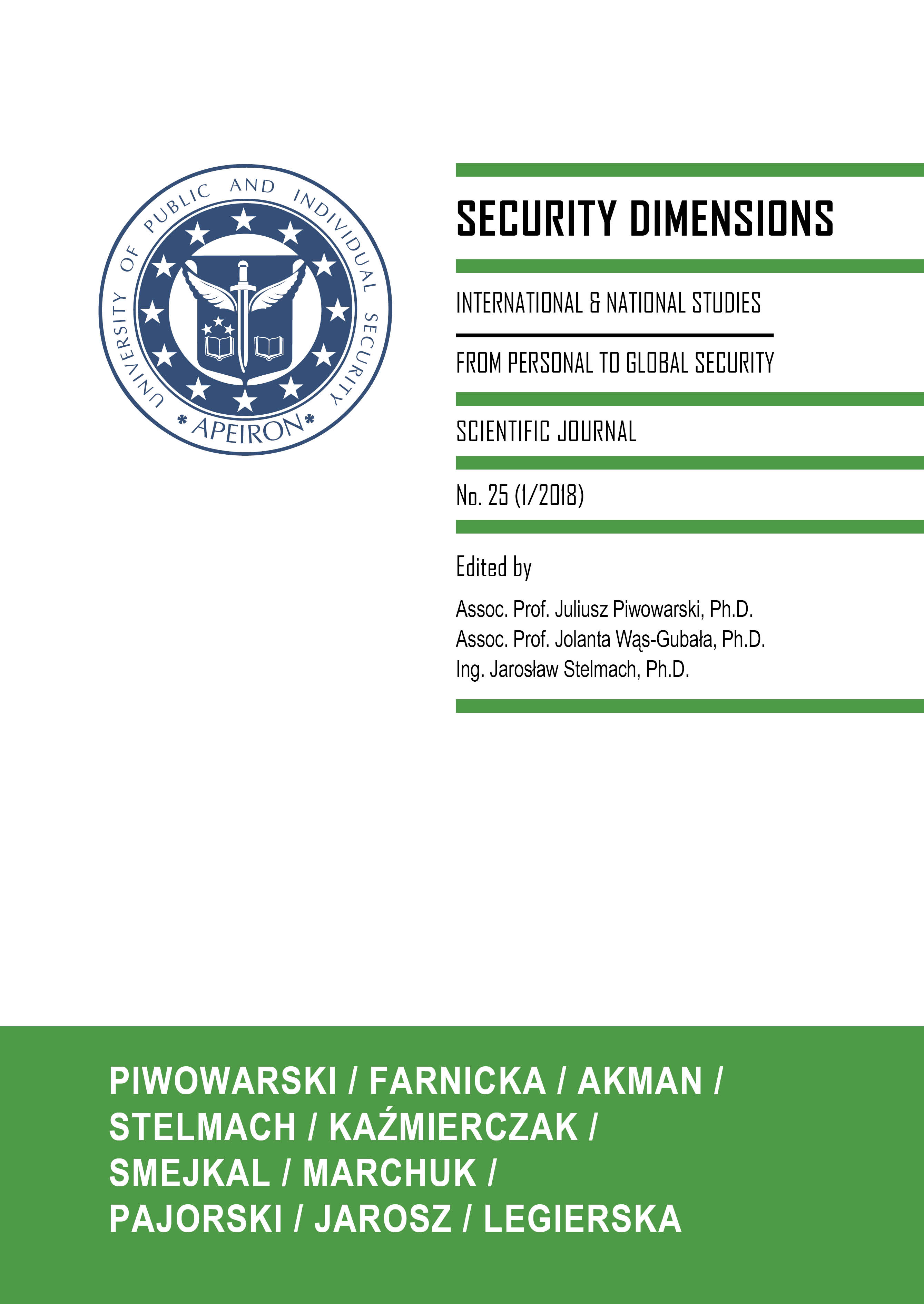From Terrorism to Cyberterrorism
From Terrorism to Cyberterrorism
Author(s): Vladimír SmejkalSubject(s): Criminal Law, Governance, Security and defense, Military policy, ICT Information and Communications Technologies
Published by: Wyższa Szkoła Bezpieczeństwa Publicznego i Indywidualnego “Apeiron” w Krakowie
Keywords: terrorism; cyberterrorism; information war; cyberwar; Czech Cyber Security Act; cybercrime;
Summary/Abstract: The paper deals with a new phenomenon of crime – the terrorism in cyberspace. Terrorism, cyber-terrorism and cyber-war are defined here. The paper focuses on the systemic integration of cyber-terrorism into the structure of terrorist attacks, describes various types of attacks in cyberspace, and deals with the legal definition of cyber-terrorism. Since the 1990´s, war and armed conflict have been moving increasingly from the interstate to the intrastate area. In the postmodern conflict, besides government troops, various irregular paramilitary groups, most commonly defined tribally, ethnically, or religiously, keep on fighting. However, their military activities are usually linked to a large scale criminal activity. Whereas, in standard wars, we expect states and their armed forces to be parties to the conflict, in the case of the postmodern conflict, hybrid wars, and the so-called asymmetric threats, war is not separated from the life of the civil society, as it used to be in standard wars of the 20th century. It is also increasingly difficult to separate war and terrorist attacks. Cyber-attacks are becoming a part of terrorist attacks. Modern information technologies are becoming more and more important in spreading ideologies which provide a fertile ground for terrorism, as they are increasingly important for training and teaching terrorist practices. Terrorists use the Internet as a means of spreading propaganda aimed at recruiting sympathizers as well as instructions and manuals for training or attack planning. Cryptocurrencies such as bitcoins are used to transfer finances. In this context, cyber-terrorism could be defined as the use of the means of modern information and communication technologies to implement an act of violence, in order to provoke a certain reaction (from the point of view of terrorists, in ideal case, the by them required psychological reaction) of the audience of the terrorist act. In the case of cyber-terrorism, it would be a politically motivated attack on instruments and / or the process of obtaining and / or processing electronic data which, as a result, means violence against non-military targets and the purpose of which is to influence, in a certain way, a wider circle of recipients rather than the direct victims of such an attack. While mostly natural persons are the target of typical terrorism, in the case of cyber-terrorism, on the contrary, the attacks are aimed at state authorities, corporations, and the critical infrastructure. It is a question whether in these cases we are able to correctly assess whether it is a terrorist attack or an (unreported) information or cyber-war conducted by a foreign state. In some cases, we cannot even be sure whether it is a criminal act which is masked as a terrorist one or vice versa, which is easier to do in cyberspace rather than in the material world.
Journal: Security Dimensions. International and National Studies
- Issue Year: 2018
- Issue No: 25
- Page Range: 118-130
- Page Count: 13
- Language: English

